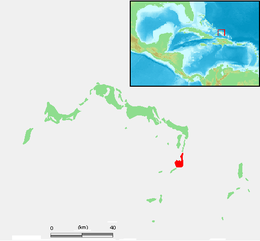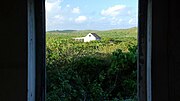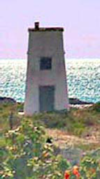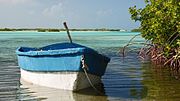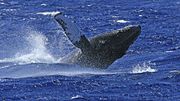
The Coral Sea Islands Territory is an external territory of Australia which comprises a group of small and mostly uninhabited tropical islands and reefs in the Coral Sea, north-east of Queensland, Australia. The only inhabited island is Willis Island. The territory covers 780,000 km2 (301,160 sq mi), most of which is ocean, extending east and south from the outer edge of the Great Barrier Reef and includes Heralds Beacon Island, Osprey Reef, the Willis Group and fifteen other reef/island groups. Cato Island is the highest point in the Territory.

The Turks and Caicos Islands are a British Overseas Territory consisting of the larger Caicos Islands and smaller Turks Islands, two groups of tropical islands in the Lucayan Archipelago of the Atlantic Ocean and northern West Indies. They are known primarily for tourism and as an offshore financial centre. The resident population in 2023 was estimated by The World Factbook at 59,367, making it the third-largest of the British overseas territories by population. However, according to a Department of Statistics estimate in 2022, the population was 47,720.
The Lucayan people were the original residents of The Bahamas before the European conquest of the Americas. They were a branch of the Taínos who inhabited most of the Caribbean islands at the time. The Lucayans were the first indigenous Americans encountered by Christopher Columbus. Shortly after contact, the Spanish kidnapped and enslaved Lucayans, with the displacement culminating in the complete eradication of the Lucayan people from the Bahamas by 1520.
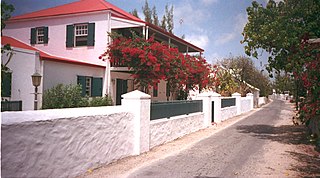
Cockburn Town is the capital of the Turks and Caicos Islands, spreading across most of Grand Turk Island. It was founded in 1681 by salt collectors.
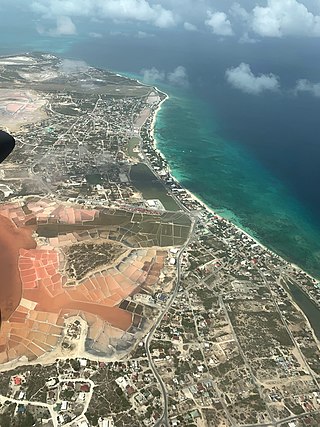
Grand Turk is an island in the Turks and Caicos Islands, a British Overseas Territory, tropical islands in the Lucayan Archipelago of the Atlantic Ocean and northern West Indies. It is the largest island in the Turks Islands with 18 km2 (6.9 sq mi). Grand Turk contains the territory's capital, Cockburn Town, and the JAGS McCartney International Airport. The island is the administrative, historic, cultural and financial centre of the territory and has the second-largest population of the islands at approximately 4,831 people in 2012.
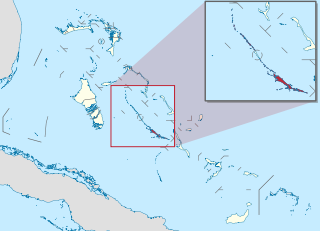
Exuma is a district of The Bahamas, consisting of over 365 islands and cays.

Mayaguana is the easternmost island and district of The Bahamas. Its population was 277 in the 2010 census. It has an area of about 280 km2 (110 sq mi).

Acklins is an island and district of the Bahamas.
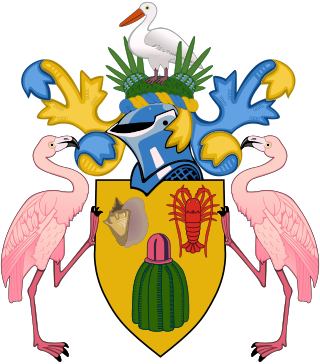
The coat of arms of the Turks and Caicos Islands consists of a gold-coloured escutcheon (shield) charged with a conch shell, lobster and a cactus, supported by two flamingos, and topped with a pelican in the crest. Adopted three years after the islands became a Crown colony, it has been the coat of arms of the Turks and Caicos Islands since 1965. The escutcheon is featured on the flag of the territory. The previous badge featured two mounds of salt in front of a ship, with doors added to the mounds after they were reportedly mistaken for igloos.

North Caicos is the second-largest island in the Turks and Caicos Islands. To the west, the Caicos Cays link to Providenciales. To the east, it is separated from Middle Caicos by Juniper Hole, a narrow passage that can accommodate only small boats. A 1600-m (1-mile) causeway connects North Caicos to Middle Caicos.

Middle Caicos is the largest island in the Turks and Caicos Islands. To the west, it is separated from North Caicos by Juniper Hole, and to the east, from East Caicos by Lorimer Creek, both narrow passages that can accommodate only small boats. The island is known for its extensive system of caves and its significant Lucayan Indian archaeological sites. The island is connected to North Caicos via a causeway. Middle Caicos was previously called Grand Caicos, although this name is not used today.

East Caicos is the fourth largest island in the Turks and Caicos Islands. To the west, it is separated from Middle Caicos by Lorimer Creek, a narrow passage that can accommodate only small boats. To the south is South Caicos. East Caicos has no inhabitants.

Cockburn Harbour is a settlement in the Turks and Caicos. It is the largest community on the island of South Caicos, with some 811 people. It has the best natural harbour of the Caicos Islands, and was once an important centre for regional trade and a major exporter of salt. Today its main industries are fishing and tourism.

Salt Cay is the second largest of the Turks Islands, one of the two island groups forming of the British territory of the Turks and Caicos Islands in the Caribbean. Its area is 6.74 square kilometres. The size of the district, which also includes some unpopulated islands like Cotton Cay nearby, is 9.1 square kilometres. The population is 108, all in the district capital Balfour Town, established in 1673, on the west coast.

Big Ambergris Cay is a private residential island and home to Ambergris Cay Private Island Resort, located within the Turks and Caicos Islands. Not to be confused with Ambergris Caye in Belize, Big Ambergris Cay is situated to the southeast of the main chain of the Caicos islands. Adjacent to Big Ambergris Cay is Little Ambergris Cay, which is an uninhabited natural reserve. Little Ambergris Cay is a unique and significant habitat for a wide range of birds and marine life. Big Ambergris Cay island is approximately four miles long, one mile wide, and 1,100 acres (4.5 km2) in total.

The following is an alphabetical list of topics related to the British Overseas Territory of the Turks and Caicos Islands.

Long Island is an island in The Bahamas that is split by the Tropic of Cancer. It is one of the Districts of the Bahamas and is known as the most scenic island in the Bahamas. Its capital is Clarence Town. The population of Long Island is 3,094 inhabitants.
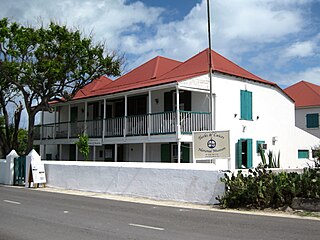
The Turks and Caicos National Museum is the national museum of the Turks and Caicos Islands. It is located in Guinep House on Front Street to the north of Cockburn Town on Grand Turk Island, which is also the capital of the archipelago. Established in the 1980s and opened in 1991, the museum is publicly funded as a nonprofit trust. It exhibits pre-historic Lucayan culture and records the history of the islands of the colonial era and the slave trade, all related to the sea. An arboretum is adjacent to the museum.

